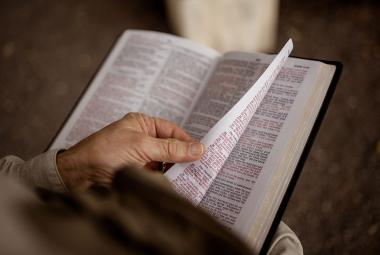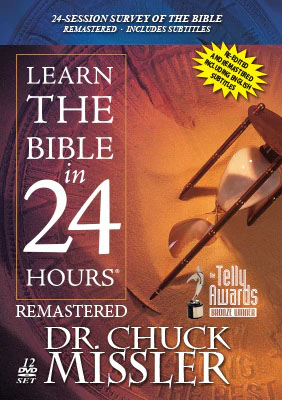Have you ever been puzzled by the inscriptions that are attached to some of the Psalms? This has puzzled scholars for centuries, and yet the key may have been in the Biblical text all along.
There are 34 psalms without inscriptions. There are 52 psalms with simple titles such as "A Psalm of David," "A Psalm of Asaph," etc. There are 14 psalms explaining their historical connection, such as "A Psalm of David when he fled from Absalom, his Son," etc. There are 39 psalms that include a special word inscription, presumably a musical annotation or instruction. There are four psalms designated for a special purpose, such as the Sabbath day, etc. And there are 15 psalms specifically designated "Songs of Degrees."
| Psalms without inscriptions | 34 |
| Psalms with simple inscriptions | 52 |
| Psalms with historical inscriptions | 14 |
| Psalms with inscriptions denoting purpose | 04 |
| Psalms entitled "Songs of Degrees" | 15 |
| Psalms with special word inscriptions (39, less 8 included in the 14 above) | 31 |
| 150 |
The antiquity of these inscriptions is well recognized. They were already in existence when the Septuagint translation was made in the 3rd century B.C., and since the translators let them stand untranslated it seems that their significance had been obscured even back then.
The Puzzle
It is an admitted fact that the key to these inscriptions has been lost for over 2,200 years. Bishop Jebb, who issued a monumental work on the Psalms in 1846 regretted that "so great are the difficulties attending this enquiry, that in many instances little more than conjectures can be offered."1 The late Dr. E. W. Bullinger said: "No subject of Biblical Study has appeared to be more incapable of solution." That great Hebraist, Franz Delitzsch, said of these so-called psalm "titles": "The Septuagint found them already in existence, and did not understand them... The key to their comprehension must have been lost very early."2
A Solution Discovered?
In the ancient Hebrew manuscripts there were no breaks or spaces separating the psalms as there are in a modern Bible. The only mark of division between them is the number in the margin. The inscriptions, therefore, have always been assumed to be the titles of the psalms following them; however, they could just as well be footnotes to the psalms preceding them. Are there any clues to Hebrew practice within the Biblical text itself?
In the third chapter of Habakkuk we find a psalm with both a superscription and a subscription that is illuminating:
- A Superscription: "A Prayer of Habakkuk the prophet, upon Shigionoth" (Hab 3:1);
- The Prayer or Psalm itself (3:2-19a);
- The Subscription: "To the chief Musician upon Neginoth" (Hab 3:19b).
We find the same arrangement in Hezekiah's Psalm of Praise and Thanksgiving for his recovery from sickness, recorded in Isaiah 38:
- The Superscription: "The writing of Hezekiah, king of Judah, when he had been sick and was recovered of his sickness" (Isaiah 38:9);
- The Psalm itself (Isaiah 38:10-20a);
- The Subscription: "Therefore we will sing my songs to the stringed instruments, all the days of our life, in the house of YHWH" (Isaiah 38:20b).
These two examples give us a key to the ancient stylistic practice regarding the inscriptions. It seems apparent that the precedent superscription was a title, and the closing subscription an amplifying instruction regarding its performance.
As an outcome of the Babylonian exile, detailed knowledge of the original Temple worship became obscured, and by the middle of the 3rd century B.C., when the Septuagint translation was made from Hebrew into Greek, there was nothing to tell the translators whether the inscriptions between the psalms belonged to what went before or what came after. Our English Bible continued their presumption that the inscriptions always related to what followed.
An Example
Psalm 9 has the superscription: "To the chief Musician upon Muthlabben, A Psalm of David." What does this mean? Muthmeans death; and ben would seem to mean son, but that seems obscure to say the least. Let us also recognize that this first part appears to be a subscription to Psalm 8 rather than a superscription to Psalm 9.
Furthermore, it could be beyn, written without the long vowel (the omission of the vowel sign being frequent in Hebrew): thus, muth-labbeyn, which means "death to the one coming between." This is how the inscription reads in the ancient Jewish Targum: "To praise, relating to the death of the man who went out between the two camps." This appears to be a reference to Goliath, who is actually called the "man between the two hosts (1 Samuel 17:4, 23)." Our English version misses this and has the translation as "a champion."
Read Psalm 8 again now in the light of this as a subscript and see in it, the celebration of David's great victory over Goliath.
These comments have been excerpted from Learn the Bible in 24 Hours.
Notes:
- J. Sidlow Baxter, Explore the Book, (6 vols), Zondervan Publishing Co, Grand Rapids MI 1960, p.93.
- Ibid.







